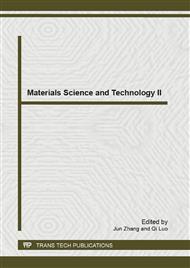p.423
p.430
p.434
p.438
p.443
p.451
p.455
p.459
p.465
Experimental Research on the Predictive Model for Surface Roughness of Titanium Alloy in Abrasive Belt Grinding
Abstract:
Titanium alloys have been applied to aerospacemedical and other fields. The surface roughness of titanium alloy about these areas is very high. Based on the results of orthogonal test, belt grinding surface roughness prediction model of TC4 Titanium alloy is established using linear regression method. The significant tests of regression equation are conducted and proved that the prediction model has a significant. The results indicate that the model has reliability on the prediction of surface roughness, abrasive belt grinding pressure has certain influence on the surface roughness, and grain size of belt and the belt linear speed have high significant influence on surface roughness and the influence coefficient are-0.9378 and-0.2317. While the contact wheel hardness and workpiece axial feeding speed have no significant influence on surface roughness.
Info:
Periodical:
Pages:
443-448
Citation:
Online since:
July 2013
Authors:
Price:
Сopyright:
© 2013 Trans Tech Publications Ltd. All Rights Reserved
Share:
Citation:


